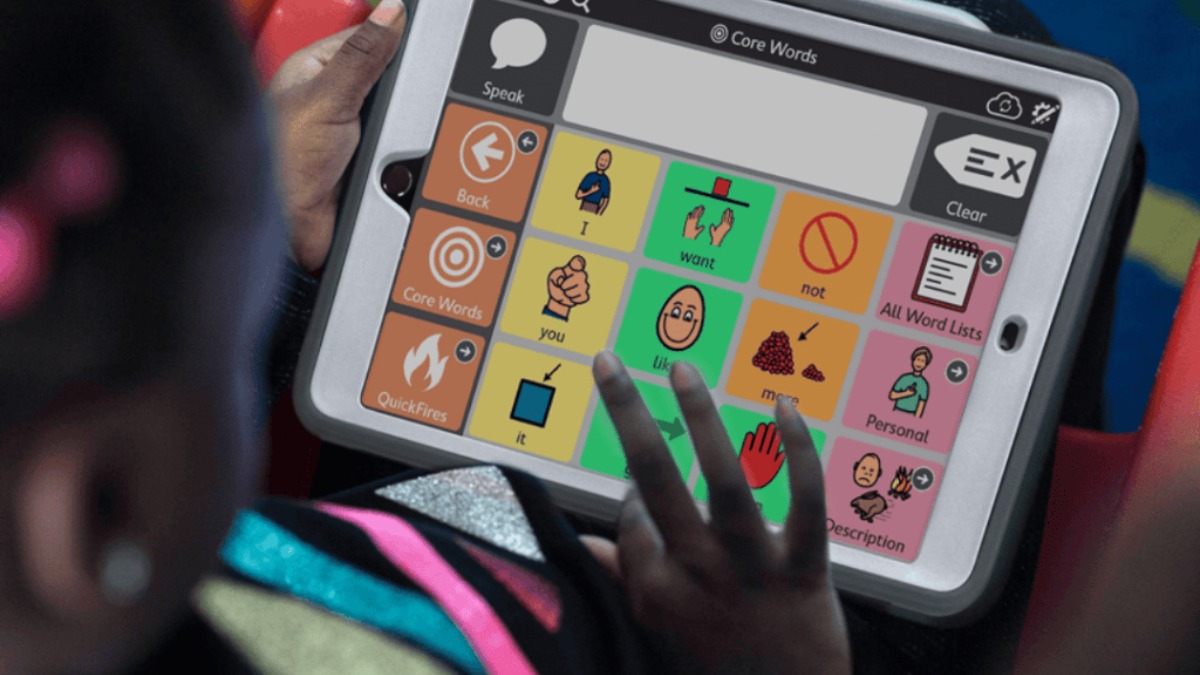Comparing DIR Floortime and Hanen: What’s Best for Your Child?
April 10, 2025
Wondering which therapy approach is right for your child? Learn the key differences between DIR Floortime and Hanen to make an informed choice.

Key Points:
- DIR Floortime and Hanen programs both support child development but differ in methodology and goals.
- DIR Floortime focuses on emotional and developmental growth through child-led interactions, while Hanen emphasizes structured communication strategies.
- Choosing the right approach depends on a child’s needs, with DIR Floortime often benefiting children with autism or developmental delays.
Research indicates that the Developmental, Individual-Difference, Relationship-Based (DIR)/Floortime™ intervention can lead to significant improvements in children with autism spectrum disorders (ASD). A pilot study found that after an average of 15.2 hours per week of home-based DIR/Floortime™ intervention over three months, participants showed substantial gains in emotional functioning, communication, and daily living skills.
Another study reported that 47% of children receiving approximately 14 hours per week of DIR/Floortime™ over one year achieved notable developmental progress. In contrast, specific statistics comparing DIR/Floortime™ to the Hanen program are limited. A systematic review concluded that while DIR/Floortime™ is a cost-effective, child-led approach that can enhance social and emotional development, more randomized controlled trials are needed to fully assess its efficacy and compare it to other interventions.
Overview of DIR Floortime Approach
DIR Floortime is a developmental approach that focuses on building emotional and relational connections between children and their caregivers. The acronym DIR stands for Developmental, Individual-difference, and Relationship-based. This method emphasizes the importance of understanding a child's unique developmental profile and emotional needs.
DIR Floortime encourages parents and therapists to engage with children at their level, using play as a primary tool for interaction. The goal is to foster emotional growth, communication skills, and social interactions. This approach is particularly beneficial for children with autism and other developmental delays, as it promotes a deeper understanding of their emotional world.
DIR Floortime is an approach designed to support children's emotional and developmental growth. Here are its key features:
- Focuses on emotional connections through play and interaction
- Individualized strategies tailored to each child's needs
- Targets specific developmental milestones
Overview of Hanen Approach
The Hanen approach is designed to support language development in young children, particularly those with communication difficulties. This method emphasizes the role of parents and caregivers as primary facilitators of language learning. Hanen provides strategies and techniques that parents can use during everyday interactions to enhance their child's communication skills.
The Hanen program focuses on creating a rich language environment, encouraging meaningful conversations, and promoting social skills. It is particularly effective for children with speech delays, autism, and other communication challenges.
The Hanen Approach is a powerful, parent-centered method designed to enhance children's language development through everyday interactions. Below are some key features of this approach:
- Parent-Centered: Empowers parents to be active participants in their child's language development.
- Everyday Interactions: Utilizes daily routines and activities to promote communication.
- Emphasis on Social Skills: Encourages social interaction and peer engagement.
Principles and Techniques
Understanding the principles and techniques behind DIR Floortime and Hanen is essential for parents interested in these approaches. Each method has its own unique framework that guides interactions and interventions.
4 Key Principles of DIR Floortime
The DIR Floortime approach is built on several key principles that emphasize emotional and developmental growth. These principles guide the therapeutic process, focusing on the individual needs of each child. Below are the core principles of DIR Floortime:
- Developmental Focus: DIR Floortime prioritizes the child's emotional and developmental milestones, encouraging growth through play and interaction.
- Individualized Approach: Each child is viewed as unique, and interventions are tailored to their specific needs and interests.
- Relationship-Based: The approach fosters strong emotional connections between the child and caregiver, enhancing engagement and learning.
- Play as a Tool: Play is utilized as a primary method for learning, allowing children to express themselves and explore their environment.
4 Key Principles of Hanen
The Hanen approach is guided by several key principles that shape its effective implementation. These principles include:
- Communication-Focused: Emphasizes the importance of communication development, helping parents and caregivers become effective communicators.
- Naturalistic Interventions: Techniques integrated into everyday routines, making learning opportunities more accessible and relevant.
- Parent Involvement: Actively involves parents in the learning process, empowering them to support their child's development at home.
- Language Enrichment: Focuses on enriching the child's language environment through modeling and responsive interactions.
To learn more about how these approaches can support your child's communication development, check out our article "How DIR Therapy Helps With Speech Delay." It offers insights into how DIR therapy can be particularly effective for addressing speech delays, providing parents with valuable tools for their child's growth.
Target Audience and Focus
Understanding who benefits from the DIR Floortime and Hanen approaches is essential for parents considering these methods for their children. Each approach targets different needs and developmental stages.
Who Benefits from DIR Floortime
DIR Floortime is an effective approach for children facing various developmental challenges, particularly those on the autism spectrum. It focuses on emotional and relational growth, making it ideal for improving social interactions and emotional regulation. Below is a breakdown of the specific groups that can benefit from DIR Floortime:
- Children with Autism: Enhances emotional connections and social skills.
- Children with Developmental Delays: Supports overall developmental progress.
- Children with Sensory Processing Issues: Addresses sensory challenges through play.
- Children with Speech Delays: Encourages communication through interactive play.
Who Benefits from Hanen
The Hanen approach offers valuable strategies for a variety of individuals, from children with language delays to parents supporting typically developing children. Below are key target groups and the benefits they gain from this approach:
- Children with Language Delays: Promotes language acquisition through natural interactions.
- Children with Social Communication Challenges: Enhances social skills and conversational abilities.
- Parents of Typically Developing Children: Provides strategies to support language development.
- Children with ADHD: Supports communication and social skills in a structured manner.

Application and Implementation
Understanding how DIR Floortime and Hanen are implemented can help parents make informed decisions about which approach may be best for their child. Each method has its own unique strategies and techniques tailored to support children's development.
How DIR Floortime is Implemented
DIR Floortime is a child-centered approach that emphasizes emotional and developmental connections. The implementation of DIR Floortime involves several key steps:
- Creating a Safe Environment: Parents or therapists create a comfortable space where the child feels secure and free to express themselves.
- Following the Child's Lead: The adult observes the child's interests and engages in play that aligns with those interests, fostering a natural interaction.
- Building Emotional Connections: Through play, the adult encourages emotional expression and communication, helping the child to develop social skills.
- Expanding Interactions: The adult gradually introduces new concepts and challenges to the child, promoting cognitive and emotional growth.
How Hanen is Implemented
The Hanen approach focuses on enhancing communication skills through natural interactions. Its implementation includes the following steps:
- Parent Training: Parents receive training on how to use specific strategies to promote communication during everyday activities.
- Modeling Language: Parents are encouraged to model language in a way that is meaningful to the child, using simple phrases and repetition.
- Encouraging Interaction: Parents learn techniques to encourage their child to communicate, such as waiting for responses and using visual supports.
- Integrating Strategies into Daily Routines: The Hanen approach emphasizes incorporating communication strategies into daily life, making learning a natural part of the child's environment.
Key Differences Between DIR Floortime and Hanen
While both DIR Floortime and Hanen Programs aim to support children with developmental challenges, they differ in key areas such as focus, approach, and the role of parents and therapists. Below is a comparison of the two approaches across various aspects:
Focus
- DIR Floortime: Emotional and developmental growth
- Hanen Programs: Structured speech and language strategies
Approach
- DIR Floortime: Child-led, play-based engagement
- Hanen Programs: Parent-led, structured techniques
Who Guides the Therapy?
- DIR Floortime: Parents and therapists follow the child’s interests
- Hanen Programs: Parents use pre-taught communication strategies
Best For
- DIR Floortime: Children with ASD, sensory processing challenges, or social delays
- Hanen Programs: Children with speech delays or social communication challenges
Example Activity
- DIR Floortime: Engaging in pretend play to encourage problem-solving and social interaction
- Hanen Programs: Using OWL (Observe, Wait, and Listen) to prompt verbal responses
Choosing the Right Approach
Selecting the most suitable approach between DIR Floortime and Hanen requires careful consideration of various factors. Each method has its strengths and may cater to different needs based on the child’s unique circumstances.
5 Factors to Consider When Choosing Between DIR Floortime & Hanen
When choosing between DIR Floortime and Hanen, it’s important for parents to consider various factors that can impact the effectiveness of each approach. The following points highlight key differences to guide your decision-making process:

Combining Approaches for Optimal Results
Integrating both DIR Floortime and Hanen can offer a well-rounded approach to supporting a child's development. By combining their strengths, parents can provide a more comprehensive support system that targets both emotional engagement and language development. Here are the key benefits of this combined approach:
- Emotional Engagement + Language Skills: Enhances overall communication and social interaction
- Flexibility in Techniques: Allows for tailored strategies based on the child’s needs
- Holistic Development: Addresses multiple areas of growth simultaneously
Parents interested in a blended approach should seek guidance from professionals familiar with both methods. This can ensure that the strategies employed are effective and appropriate for their child’s development.
Ultimately, the choice between DIR Floortime and Hanen, or a combination of both, should be based on the child’s individual needs and the goals parents wish to achieve. For more insights on finding the most effective therapy options, check out our article Discover the Best Autism Therapy for Effective Support, where we explore various approaches to ensure the best care for your child.
Get DIR Floortime Support in New Jersey with WonDIRfulPlay
If you’re looking for expert DIR Floortime therapy in New Jersey, WonDIRfulPlay offers comprehensive support tailored to your child’s developmental needs. Our specialists focus on building deep emotional connections while helping children progress through key developmental milestones.
By choosing DIR Floortime, you provide your child with a play-based, engaging environment that nurtures social skills, problem-solving, and emotional regulation. Whether your child struggles with autism, sensory challenges, or developmental delays, WonDIRfulPlay is here to guide them toward meaningful growth.
Contact us today to learn more about how DIR Floortime can help your child thrive!
Recent articles












.jpg)


.jpg)






.jpg)











.jpg)
.jpg)

.jpg)
.jpg)
.jpg)



.jpg)
.jpg)
.jpg)

.jpg)
.jpg)

.jpg)



.jpg)


.jpg)
%20(1).jpg)

.jpg)






.jpeg)









.jpg)
.jpg)
.jpg)
.jpg)
.jpg)


.jpg)
.jpg)
.jpg)
.jpg)
.jpg)
.jpg)
.jpg)
.jpg)
.jpg)
.jpg)
.jpg)
.jpg)
.jpg)
.jpg)
.jpg)
.jpg)
.jpg)
.jpg)
.jpg)
